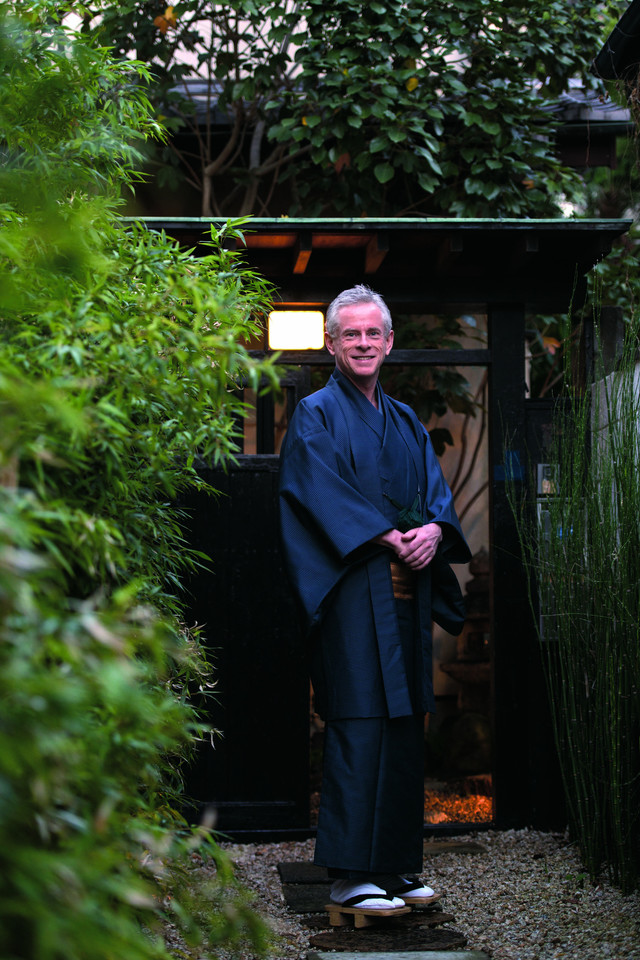Peter MacMillan
Teaches at Kyorin University and the University of Tokyo, and is a Councilor of the National Federation of UNESCO Associations in Japan. He has lived in Japan for many years and strives to be a bridge between Japan and the world. His translation One Hundred Poets, One Poem Each, published in 2008, won prizes in both Japan and the United States.
I grew up in the countryside of Ireland, where there were more horses and cows than people. I never imagined that I would one day spend my life in a country on the other side of the world. At university I studied poetry and philosophy, and after I graduated I taught both of those subjects at a Japanese university. I only planned to spend a year in Japan, but already several decades have passed, and Japan remains a country of mystery and discovery that only increases with time.
In an attempt to learn more of the Japanese spirit, I translated the most famous work of Japanese poetry, the Hyakunin isshu (One Hundred Poets, One Poem Each), compiled by Fujiwara no Teika (1162–1241). I discovered that many of the poems in the collection are universal in nature and could easily be understood by people of other countries. But other poems in the collection display a more distinctly Japanese sensibility. Poems on cherry blossoms are especially Japanese. In one beautiful pair of poems from the Tales of Ise the hero Narihira writes:
If only there were
no cherry blossoms
in this world,
what calm would reign
in the heart of spring.
Then someone else replied,
It is because
the blossoms scatter
that they are splendid.
In this world of sorrow,
what lasts for long?
The Japanese find the quintessentially beautiful in the fleeting, in contrast to Western literature, which has traditionally equated beauty with immortality. The reply poem asserts that in the world of impermanence the very fact that the blossoms are short-lived is what makes them beautiful.
After the Great East Japan Earthquake I resolved to do more for my adopted country. I now devote time to disseminating Japanese culture in Japan and overseas and translate Japanese poetry as my way of thanking Japan for the many blessings of life here. I spent the last four years translating the Tales of Ise, which is a collection of elegant and beautiful tales about love from the Heian period (794–1185). The Tales of Ise is a timeless encapsulation of the exquisite poetry and aesthetics of the early-Heian-period nobility. It is a world where the deepest aspects of love are expressed through poetry, and where pursuing the Way of Love means being wholly committed to poetic expression.
I have also translated many poems about Mount Fuji and created a series of prints called ThirtySix New Views of Mount Fuji. Mount Fuji is a sacred mountain of cultural importance that has been depicted widely in literature and art since the seventh century. I hope the Thirty-Six New Views of Mount Fuji will transmit the cultural importance of this sacred mountain to people both in Japan and around the world.
For me Japan is my second home, the country of harmony and beauty, elegance and adventure, and an endless source of inspiration for my poetry and art. Though on the opposite side of the earth, I feel truly at home here. My love of Japan and its people grows day by day, and each moment is as fresh as when I first arrived almost thirty years ago.
Crane Fuji, a print from MacMillan’s series Thirty-Six New Views of Mount Fuji, celebrates Mount Fuji becoming a World Heritage Site and the dissemination of Japanese culture around the world. The print series was inspired by the ThirtySix Views of Mount Fuji of the ukiyo-e artist Katsushika Hokusai (1760–1849). © 2012 Peter MacMillan.
































































































































